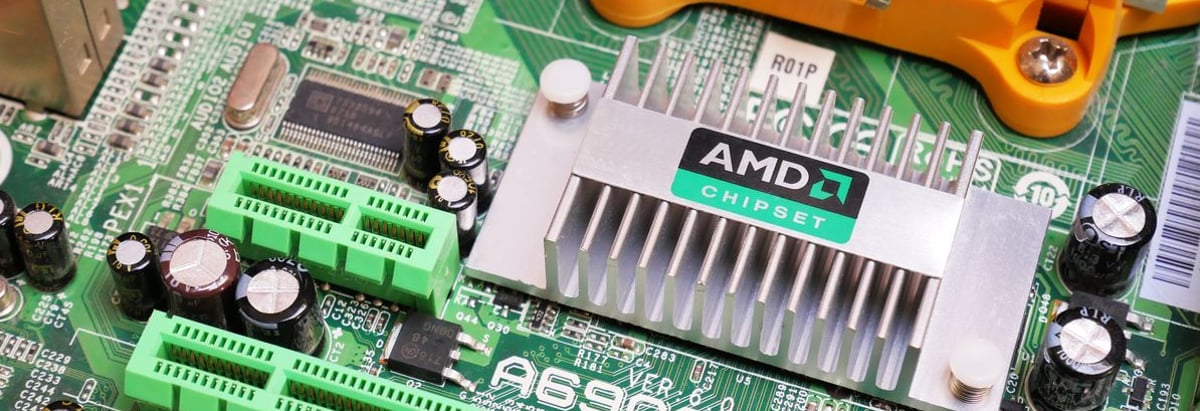- United States
- /
- Semiconductors
- /
- NasdaqGS:AMD
A Close Look At Advanced Micro Devices, Inc.’s (NASDAQ:AMD) 20% ROCE

Today we are going to look at Advanced Micro Devices, Inc. (NASDAQ:AMD) to see whether it might be an attractive investment prospect. To be precise, we'll consider its Return On Capital Employed (ROCE), as that will inform our view of the quality of the business.
Firstly, we'll go over how we calculate ROCE. Second, we'll look at its ROCE compared to similar companies. Finally, we'll look at how its current liabilities affect its ROCE.
Understanding Return On Capital Employed (ROCE)
ROCE measures the amount of pre-tax profits a company can generate from the capital employed in its business. Generally speaking a higher ROCE is better. In brief, it is a useful tool, but it is not without drawbacks. Author Edwin Whiting says to be careful when comparing the ROCE of different businesses, since 'No two businesses are exactly alike.'
So, How Do We Calculate ROCE?
The formula for calculating the return on capital employed is:
Return on Capital Employed = Earnings Before Interest and Tax (EBIT) ÷ (Total Assets - Current Liabilities)
Or for Advanced Micro Devices:
0.20 = US$204m ÷ (US$4.3b - US$1.9b) (Based on the trailing twelve months to September 2018.)
So, Advanced Micro Devices has an ROCE of 20%.
Check out our latest analysis for Advanced Micro Devices
Want to participate in a short research study? Help shape the future of investing tools and receive a $60 prize!
Does Advanced Micro Devices Have A Good ROCE?
ROCE can be useful when making comparisons, such as between similar companies. In our analysis, Advanced Micro Devices's ROCE is meaningfully higher than the 14% average in the Semiconductor industry. We would consider this a positive, as it suggests it is using capital more effectively than other similar companies. Independently of how Advanced Micro Devices compares to its industry, its ROCE in absolute terms appears decent, and the company may be worthy of closer investigation.
Advanced Micro Devices delivered an ROCE of 20%, which is better than 3 years ago, as was making losses back then. This makes us wonder if the company is improving.

It is important to remember that ROCE shows past performance, and is not necessarily predictive. ROCE can be deceptive for cyclical businesses, as returns can look incredible in boom times, and terribly low in downturns. This is because ROCE only looks at one year, instead of considering returns across a whole cycle. Future performance is what matters, and you can see analyst predictions in our freereport on analyst forecasts for the company.
How Advanced Micro Devices's Current Liabilities Impact Its ROCE
Short term (or current) liabilities, are things like supplier invoices, overdrafts, or tax bills that need to be paid within 12 months. The ROCE equation subtracts current liabilities from capital employed, so a company with a lot of current liabilities appears to have less capital employed, and a higher ROCE than otherwise. To counter this, investors can check if a company has high current liabilities relative to total assets.
Advanced Micro Devices has total assets of US$4.3b and current liabilities of US$1.9b. Therefore its current liabilities are equivalent to approximately 43% of its total assets. Advanced Micro Devices has a medium level of current liabilities, which would boost the ROCE.
Our Take On Advanced Micro Devices's ROCE
With a decent ROCE, the company could be interesting, but remember that the level of current liabilities make the ROCE look better. But note: Advanced Micro Devices may not be the best stock to buy. So take a peek at this freelist of interesting companies with strong recent earnings growth (and a P/E ratio below 20).
I will like Advanced Micro Devices better if I see some big insider buys. While we wait, check out this freelist of growing companies with considerable, recent, insider buying.
To help readers see past the short term volatility of the financial market, we aim to bring you a long-term focused research analysis purely driven by fundamental data. Note that our analysis does not factor in the latest price-sensitive company announcements.
The author is an independent contributor and at the time of publication had no position in the stocks mentioned. For errors that warrant correction please contact the editor at editorial-team@simplywallst.com.
Simply Wall St analyst Simply Wall St and Simply Wall St have no position in any of the companies mentioned. This article is general in nature. We provide commentary based on historical data and analyst forecasts only using an unbiased methodology and our articles are not intended to be financial advice. It does not constitute a recommendation to buy or sell any stock and does not take account of your objectives, or your financial situation. We aim to bring you long-term focused analysis driven by fundamental data. Note that our analysis may not factor in the latest price-sensitive company announcements or qualitative material.
About NasdaqGS:AMD
Flawless balance sheet with reasonable growth potential.
Similar Companies
Market Insights
Community Narratives





